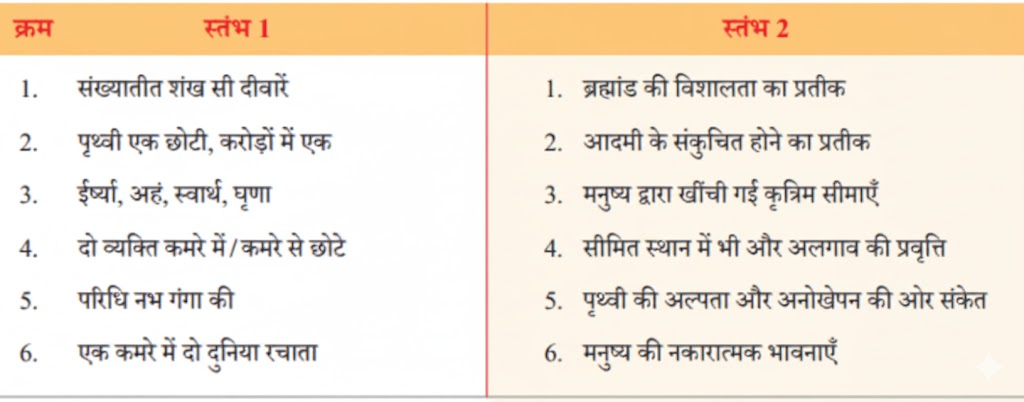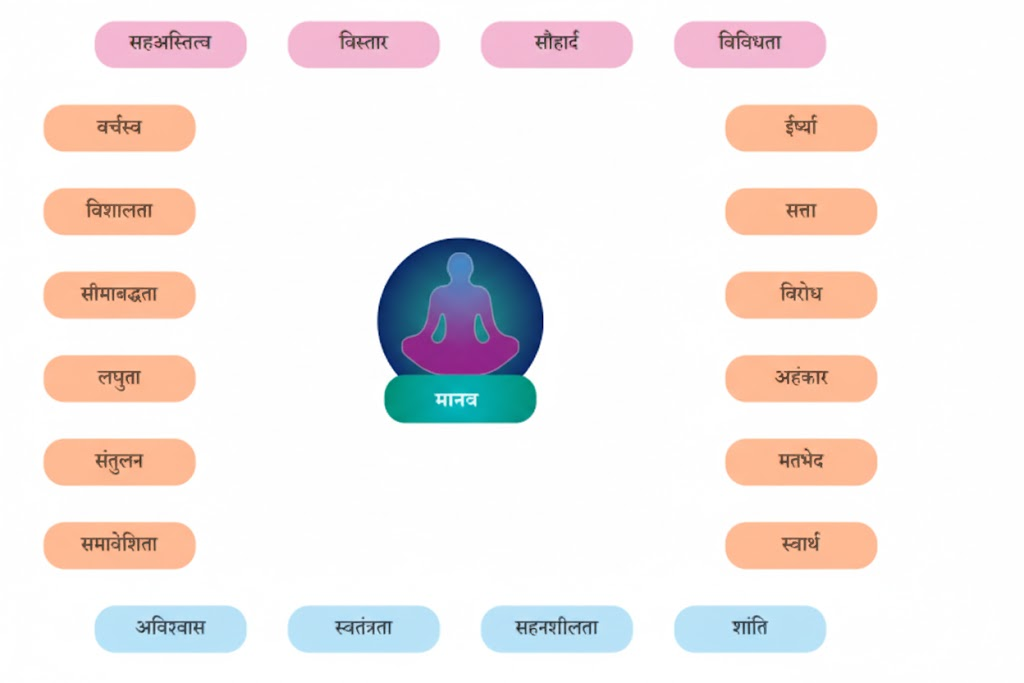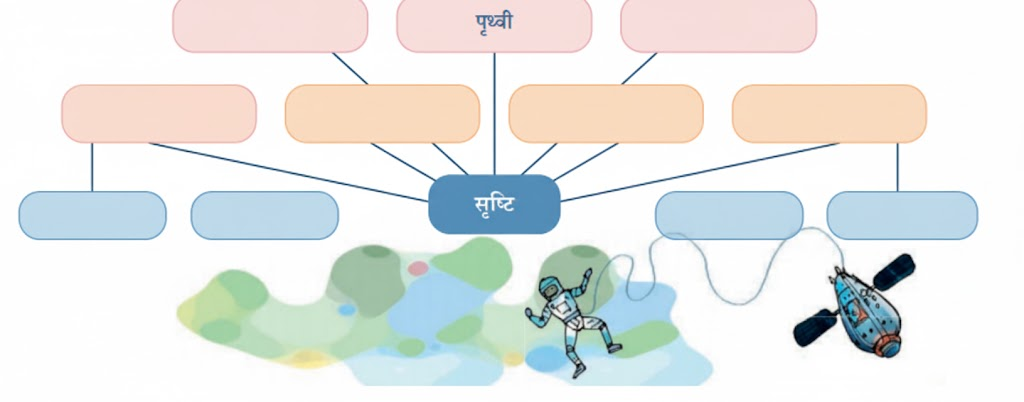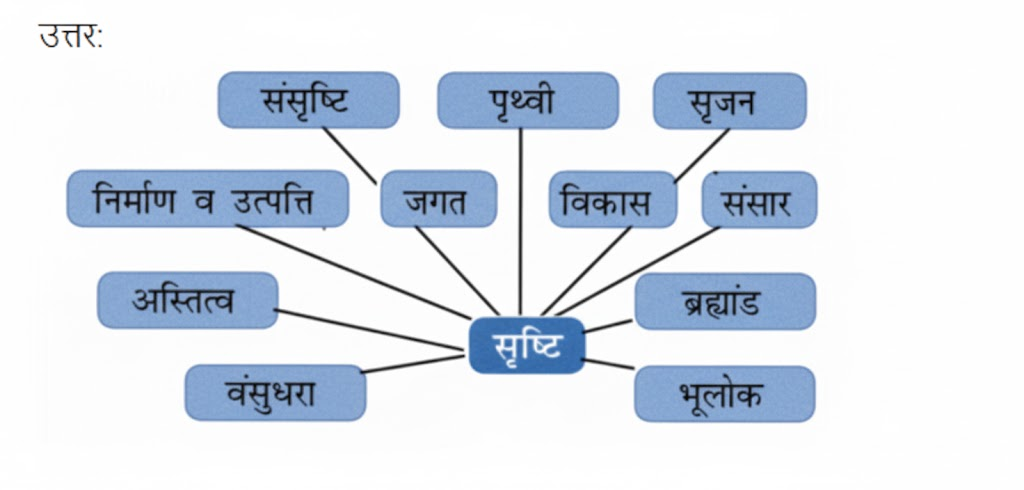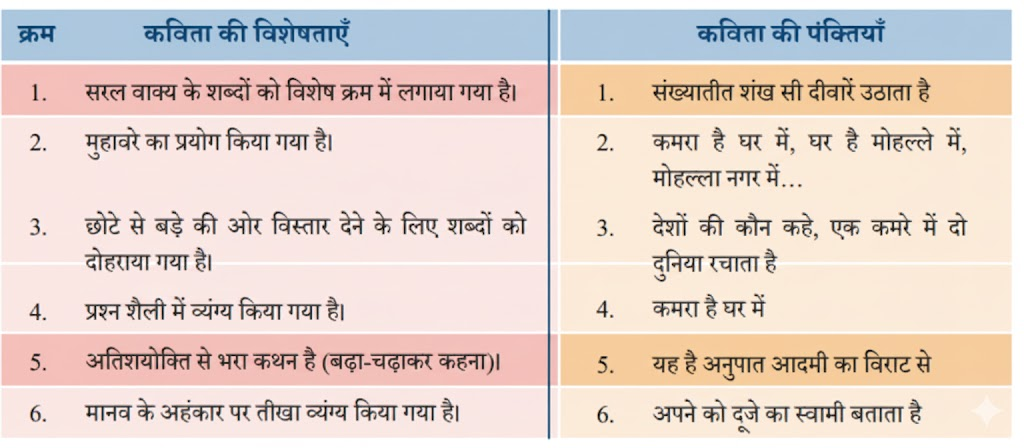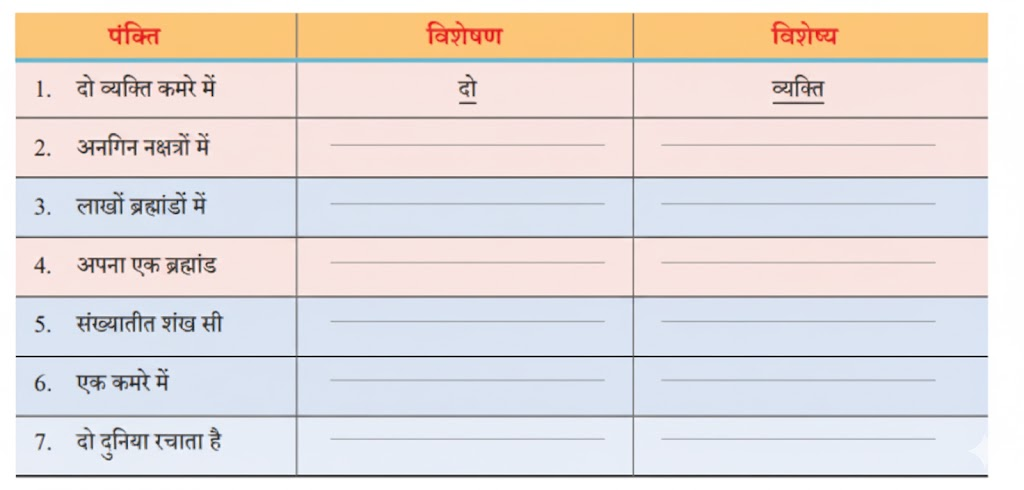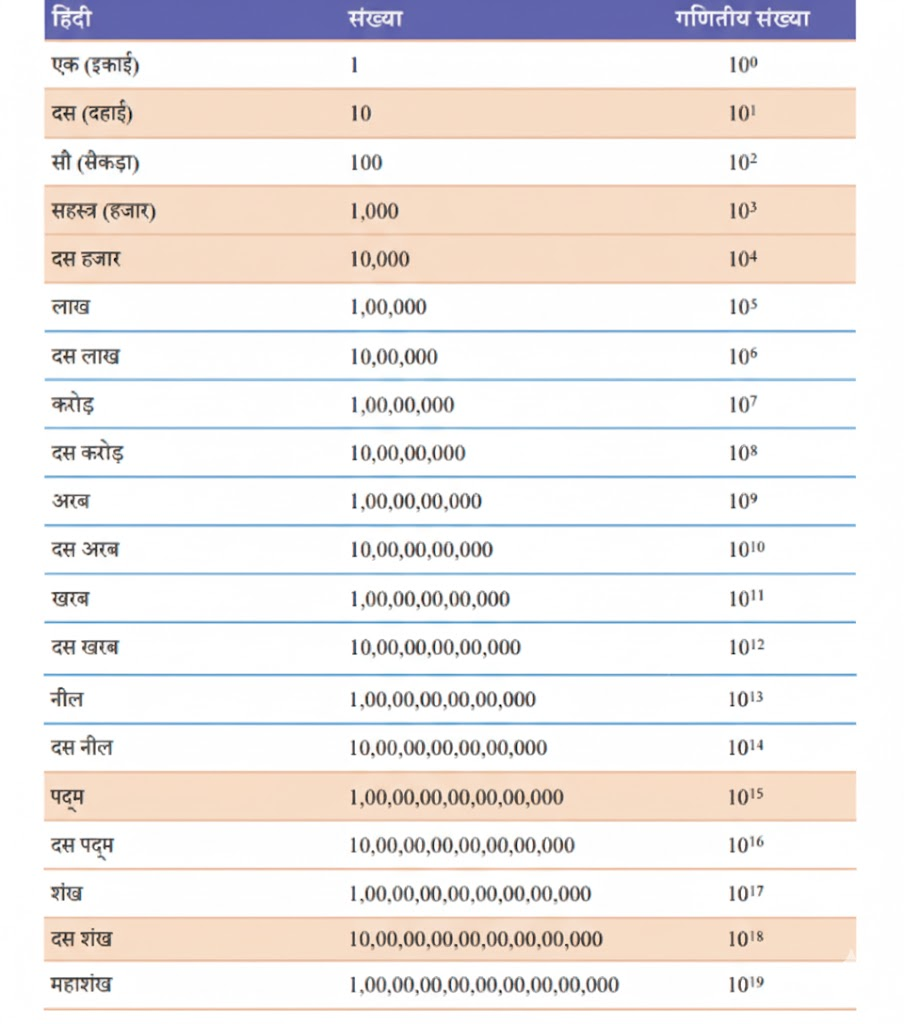Stepwise Solutions & Exam Tips for Class 8 Hindi Chapter 9 Aadami Ka Anupat
FAQs on NCERT Solutions For Class 8 Hindi Malhar Chapter 9 Malhar Aadami Ka Anupat - 2025-26
1. What are NCERT Solutions for Class 8 Hindi Malhar Chapter 9 Aadami Ka Anupat, and how do they help in exam preparation?
NCERT Solutions for Class 8 Hindi Malhar Chapter 9 Aadami Ka Anupat are comprehensive, stepwise answers to all intext and back exercises of the chapter. These solutions, following CBSE guidelines, help students understand key concepts, structure answers according to marking schemes, and reinforce learning for better performance in exams.
2. How can I use step-by-step NCERT Solutions for Class 8 Hindi Chapter 9 to score full marks?
To score full marks using NCERT Solutions for Class 8 Hindi Chapter 9, follow each step as given and present your answers clearly. Use bullet points, highlight key definitions, and break longer answers into logical parts—these strategies, aligned with CBSE pattern, maximize marks and make your presentation exam-ready.
3. Are diagrams or definitions mandatory in answers for CBSE Class 8 Hindi Malhar Chapter 9?
Providing relevant diagrams and accurate definitions in NCERT Solutions for Class 8 Hindi Malhar Chapter 9 Aadami Ka Anupat can help secure extra marks according to CBSE marking schemes. If asked, label diagrams neatly and include precise definitions; otherwise, focus on clear explanations, which are highly valued in Hindi subject evaluation.
4. Where can I download free PDF solutions for Class 8 Hindi Malhar Chapter 9 Aadami Ka Anupat?
You can download the free PDF of NCERT Solutions for Class 8 Hindi Malhar Chapter 9 Aadami Ka Anupat exclusively from Vedantu. Vedantu provides high-quality, teacher-reviewed solutions in PDF format for convenient offline study and quick revision.
5. What are the most important topics and questions in NCERT Solutions for Class 8 Hindi Chapter 9 for CBSE exams?
The most important topics in NCERT Solutions for Class 8 Hindi Chapter 9 typically include core themes, key definitions, author’s intent, and any intext or back exercise questions highlighted in the Vedantu PDF. Focus on questions that require detailed explanations, word meanings, and reference to context to strengthen exam readiness.
6. How should long answers be structured for maximum marks in Class 8 Hindi Malhar Chapter 9 Aadami Ka Anupat?
Structuring long answers for NCERT Solutions for Class 8 Hindi Malhar Chapter 9 Aadami Ka Anupat involves a systematic approach:
- Start with a concise introduction referencing the question.
- Breaking the answer into logical paragraphs.
- Include definitions, examples, and where required, relevant quotes from the text.
- Conclude with a summary linking back to the main theme.
7. Are NCERT Solutions for Class 8 Hindi Malhar Chapter 9 Aadami Ka Anupat enough for CBSE board exams?
NCERT Solutions for Class 8 Hindi Malhar Chapter 9 Aadami Ka Anupat cover all core and secondary topics required by the CBSE syllabus. For most students, thoroughly practicing these stepwise solutions on Vedantu provides a strong foundation and is sufficient for good performance in board exams, especially when combined with revision and sample papers.
8. What common mistakes should I avoid in CBSE Class 8 Hindi Chapter 9 Aadami Ka Anupat answers?
To excel in NCERT Solutions for Class 8 Hindi Chapter 9, avoid these frequent mistakes:
- Missing out key points or steps in long answers
- Omitting definitions or diagrams where required
- Poor handwriting or messy presentation
- Using incorrect terminology not aligned with the textbook
- Overlooking marks allocation per step or point
9. How can a revision planner from Vedantu help prepare for Class 8 Hindi Chapter 9 Aadami Ka Anupat quickly?
A Vedantu revision planner for NCERT Solutions Class 8 Hindi Chapter 9 Aadami Ka Anupat helps students organize preparation efficiently with structured 1-day, 3-day, and 7-day plans, ensuring complete coverage, timely revision of key questions, and targeted practice of high-weightage topics.
10. Do examiners award partial marks for correct steps even if the final answer is wrong in Class 8 Hindi Chapter 9 questions?
In NCERT Solutions for Class 8 Hindi Chapter 9 as per the CBSE marking scheme, examiners often award partial marks for correct steps, relevant points, or justified explanations, even if the final answer is not fully correct. Always show your working and understanding in every part of your answer.























